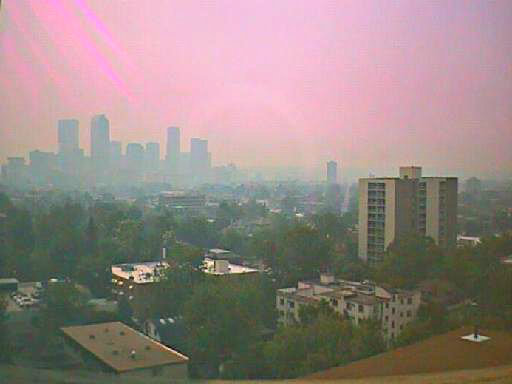
 Colorado’s air could get cleaner under new proposed rules to shrink emissions from the state’s oil and gas operations. That's if the new regulations, which Gov. Hickenlooper announced last week, pass.
Colorado’s air could get cleaner under new proposed rules to shrink emissions from the state’s oil and gas operations. That's if the new regulations, which Gov. Hickenlooper announced last week, pass.
The state estimates that the proposed changes would capture 92,000 tons of volatile organic compounds a year. That’s like taking every car in Colorado off the road.
Colorado Matters host Ryan Warner spoke with CPR's Lesley McClurg, who has been following the story. A transcript of their conversation is below.
Ryan Warner: What makes the new rules the strongest in the country?
Lesley McClurg: The proposed rules are “historic” because Colorado would be the first state to regulate methane. Methane is a potent greenhouse gas from oil and gas operations. In fact, it’s much worse than the gas we typically think about when we think about global warming; it traps heat at least 20 times more effectively than carbon dioxide. But, the rules go beyond methane: They require the largest operators in the state to check for and repair leaks every month.
How much cleaner could Colorado’s air become?
The state estimates up to a 34 percent reduction in emissions from oil and gas operations by removing about 100,000 tons of air pollution annually. While air pollution comes from many sources -- cars, buildings, etc. -- the state says this move could help bring Colorado back into compliance with federal air quality standards.
Colorado doesn’t meet federal standards now?
No, it doesn't, but the state as a whole isn’t out of compliance. The Front Range, in particular, doesn’t meet EPA standards. The air between, essentially, Fort Collins and the Chatfield Reservoir is dirtier than it’s supposed to be. Part of the issue is that this area is heavily populated. Part of it’s geography because the mountains trap pollutants. The weather also plays a role: Hot, sunny, still days are perfect for ozone formation, and Colorado has seen a lot of those kinds of days in recent years. Finally, bad air rolls in from other places and gets stuck here.
Why is the oil and gas industry the target of these rules?
Because the industry is growing so fast. There are 50,000 wells in the state now, and that number is expected to increase quickly in coming years. The state says it wants to make sure the right regulations are in place as the state government anticipates this is only the beginning of the boom.
What is the oil and gas industry saying?
The big companies, like Noble Energy, Encana and Anadarko, support tighter regulations. They are the three largest operators in the state, and they are calling the new rules innovative and even “overdue.” But, the Colorado Oil and Gas Association, or COGA, says the devil’s in the details. Doug Flanders, a spokesman for COGA, says they’re still reviewing the highly technical rules. He says, “Every one of those modifications are going to have an economic cost to that. And we are have to make sure all of that is in consideration especially when you’re talking about the small or even mid-size operators throughout the state.” At last week’s public meeting, many smaller operators said they were worried about how the costs would hit their bottom lines. These are operations with less than 200 employees.
How much are these new regulations expected to cost the industry?
It depends on who you listen to. The state says it would be about $30 million annually. But small operators argue that that estimate is far too low.
How do you check for leaks? You can’t exactly see air pollution.
The best way to detect leaks is with a special camera called a Forward Looking Infrared camera or FLIR. It’s a technology that’s growing in popularity. But, they’re expensive, running at about $100,000 each. But the rules do not dictate how operators should detect leaks.
Who would enforce these new rules?
This is mostly a check-yourself system. In other words, operators would run monthly tests on their facilities to check emission levels and fix leaks. The proposal doesn’t increase the number of inspectors on the ground. Currently, the state has 12 inspectors. And they’re responsible to check the more than 50,000 wells and 8,000 tanks currently in Colorado. Not surprisingly, environmentalists are worried about how and if the rules will be enforced.
What else are environmentalists saying about the rules?
They’re mostly supportive. Their biggest fear is that the rules could be watered down during the review process.
Who would be subject to the new rules?
All oil and gas operators regardless of their size. Anything upstream of gas processing plants is targeted. For example, well facilities, tanks, and compression stations that move the gas down the pipelines. But, the rules are not exhaustive. They don’t address emissions from all the trucks that are on the road hauling materials around in gas patch.








